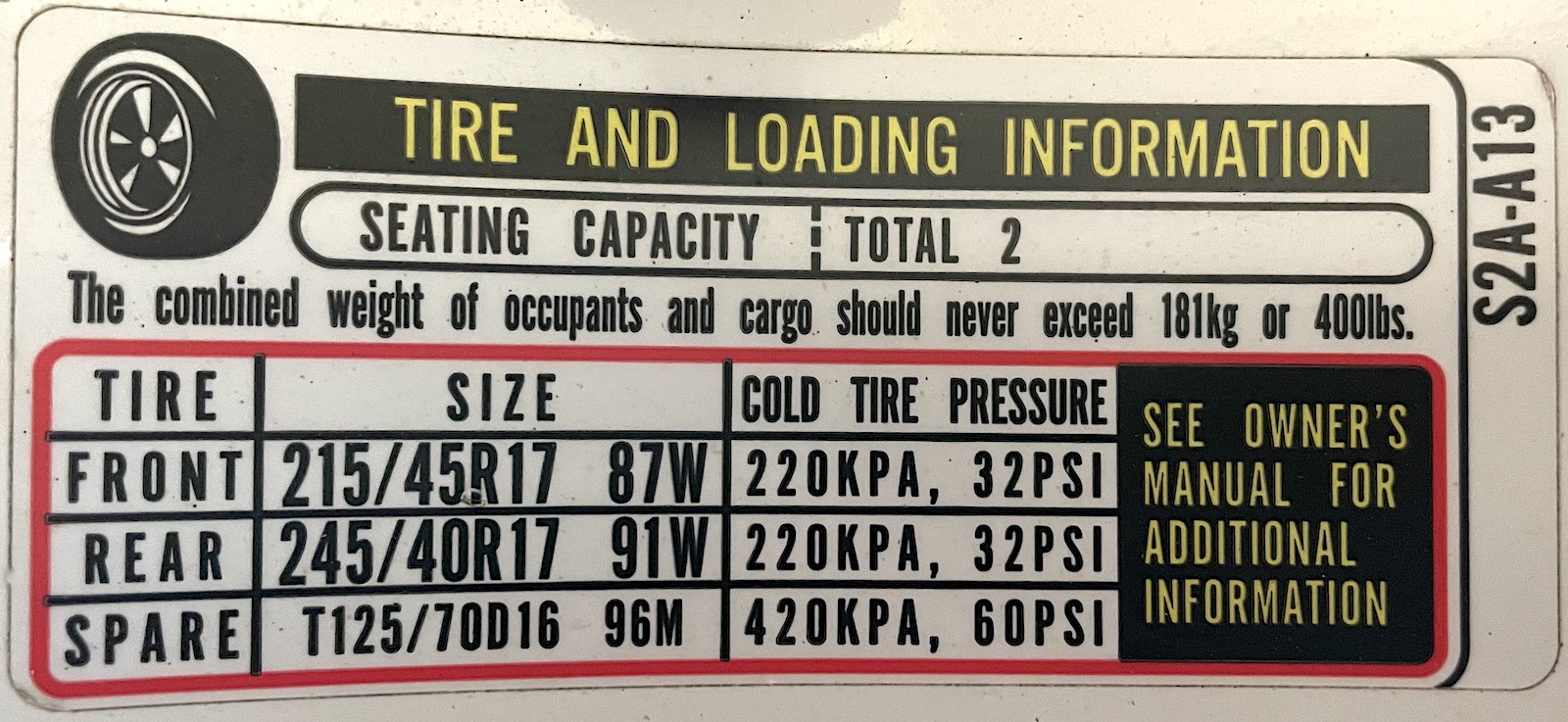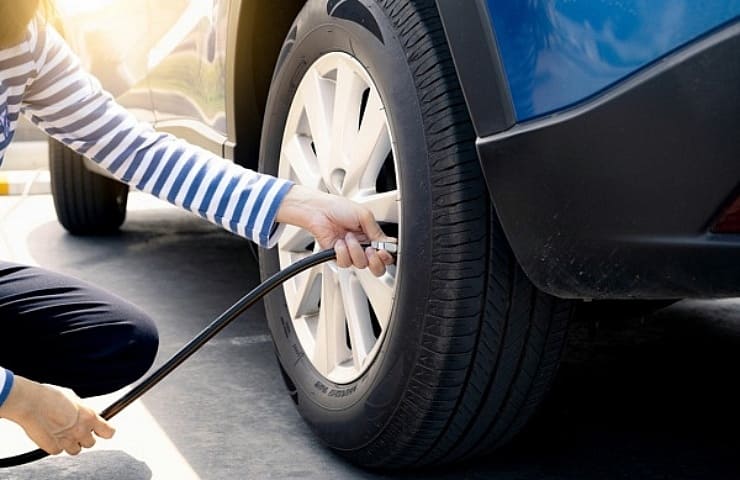Inflate a tire by first removing the valve cap and attaching the air hose to the valve stem. Then, use a tire gauge to check the current pressure and inflate the tire to the recommended level.
When it comes to maintaining your vehicle’s optimal performance, ensuring your tires are properly inflated is crucial. Insufficient tire pressure can lead to decreased fuel efficiency, uneven tire wear, and even potential blowouts. Inflating your tires is a quick and simple task that can be done at most gas stations or with the help of a portable air compressor.
By following a few easy steps, you can ensure your tires are at the correct pressure, thus improving safety, tire longevity, and fuel economy. This guide will provide clear instructions on how to properly inflate your tires, allowing you to maintain optimal vehicle performance.
Checking Tire Pressure
Checking tire pressure is an essential part of maintaining a safe and smooth driving experience. Properly inflated tires not only improve fuel efficiency but also ensure better handling and reduce the risk of tire blowouts. In this section, we will explore two important steps involved in checking tire pressure: using a tire pressure gauge and finding the recommended pressure.
Using A Tire Pressure Gauge
To accurately check tire pressure, you will need a tire pressure gauge, which can be easily found at any automotive store. Follow these steps to use a tire pressure gauge:
- Ensure your vehicle is parked on a level surface.
- Remove the dust cap from the tire valve stem.
- Press the tire pressure gauge firmly onto the valve stem. You will hear a slight hissing sound as air is released.
- Read the pressure on the gauge. It will display the PSI (pounds per square inch) or kPa (kilopascal).
- If the reading is within the recommended range, replace the dust cap and move on to the next tire. If the reading is below the recommended range, you will need to inflate the tire.
Finding The Recommended Pressure
The recommended tire pressure for your vehicle can be found in several places:
- Vehicle Manual: Consult your vehicle’s manual for the manufacturer’s recommended tire pressure. It is usually listed in the specifications section.
- Tire Placard: Look for a sticker on the driver’s side doorjamb or inside the fuel filler door. It will display the recommended pressure for the front and rear tires.
- Online Resources: Many tire manufacturer websites or vehicle manufacturer websites provide tire pressure information for specific models.
Once you have found the recommended pressure, it’s important to note that the recommended pressure is usually for cold tires. Tire pressure increases as the tires heat up during driving. Therefore, it is advisable to check tire pressure when the tires are cool, preferably in the morning before driving or after the vehicle has been parked for a few hours.
Checking tire pressure regularly, ideally once a month, will help you maintain optimal tire performance, prolong tire life, and improve overall safety on the road.
Inflating The Tire
Properly inflating your tires is essential for safe and efficient driving. In this section, we will guide you through the process of inflating your tire to the recommended PSI (pounds per square inch) level.
Gathering The Necessary Tools
Before you begin inflating your tire, gather the following tools:
- Tire pressure gauge
- Air compressor or pump
- Tire valve cap remover (optional)
- Vehicle owner’s manual (for recommended PSI level)
Using An Air Compressor Or Pump
Now that you have the necessary tools, follow these steps to inflate your tire:
- Park your vehicle on a level surface and engage the parking brake.
- Locate the tire valve stem and remove the valve cap (if present) using a valve cap remover or your fingers.
- Attach the air compressor or pump nozzle securely to the tire valve stem.
- If your air compressor or pump has PSI settings, set it to the recommended PSI level mentioned in your vehicle’s owner’s manual.
- Use the tire pressure gauge to check the current PSI level of your tire. Place the gauge onto the valve stem and press firmly to get an accurate reading.
- If the current PSI level is below the recommended level, turn on the air compressor or pump and inflate the tire until it reaches the recommended PSI level.
- Periodically check the PSI level using the tire pressure gauge while inflating to avoid over-inflation.
- Once the tire is inflated to the recommended level, remove the air compressor or pump nozzle from the valve stem and immediately replace the valve cap to prevent dirt and debris from entering.
- Repeat the process for all other tires, as each tire may have different recommended PSI levels.
Keep in mind that over-inflating or under-inflating your tires can lead to uneven tread wear, decreased fuel efficiency, and poor handling. Regularly checking and maintaining the correct tire pressure is crucial for your safety on the road.
Safety Precautions
When inflating your tires, it’s crucial to prioritize safety precautions to prevent accidents and ensure a smooth process. By following these steps, you can mitigate potential risks associated with tire inflation.
Securing The Vehicle
To start, make sure the vehicle is parked on a flat and stable surface before inflating the tires. Engage the parking brake and place wheel chocks behind and in front of the tires to prevent any rolling movement. This step is vital for maintaining stability and safety during the inflation process.
Handling Overinflated Tires
If the tire becomes overinflated, immediately release air gradually using the tire chuck to reach the recommended pressure. Avoid sudden or excessive release of air to prevent damage to the tire or potential injury. It’s important to regularly check the pressure as you inflate to prevent overinflation.

Credit: www.vwofchicagoland.com
Tips For Maintenance
As part of tire maintenance, it is crucial to consider a few key tips to ensure optimal performance and longevity:
Regularly Monitoring Tire Pressure
Regular monitoring of tire pressure extends the lifespan of your tires.
- Check pressure with a reliable gauge at least once a month.
- Ensure pressure matches manufacturer’s recommendations.
Ensuring Proper Inflation
Proper inflation is essential for safety and fuel efficiency.
- Inflate tires when they are cold for accurate readings.
- Avoid over-inflation as it can lead to uneven wear.
Common Mistakes To Avoid
When inflating tires, it is important to avoid common mistakes, such as not checking the recommended pressure, overfilling the tire, or ignoring signs of damage. Regularly inspecting the tires, following the manufacturer’s guidelines, and using a pressure gauge can help prevent these errors and ensure safe driving.
Ignoring Tire Condition
Ignoring tire condition can lead to dangerous situations on the road. Damaged or worn-out tires may not hold inflation properly. Inspect tires regularly for cuts, punctures, or uneven wear. Proper tire maintenance is crucial for safe driving.Using Incorrect Inflation Techniques
Using incorrect inflation techniques can affect tire performance. Underinflated tires can cause poor fuel efficiency and handling. Overinflation can lead to a rough ride and reduced traction. Refer to the vehicle manual for recommended tire pressures.
Credit: m.facebook.com

Credit: www.ebay.com
Frequently Asked Questions For How To Inflate Tire
How Do You Put Air In A Tire At A Gas Station?
To put air in a tire at a gas station, follow these steps: 1. Park near the air pump and turn off the engine. 2. Remove the valve cap from the tire. 3. Attach the air hose securely onto the valve stem.
4. Set the desired air pressure using the gauge on the pump. 5. Press the lever to start filling the tire. Always check the pressure using the gauge and add more air if needed. 6. Once done, remove the hose and replace the valve cap.
How Do You Properly Inflation Tires?
To properly inflate tires, follow these steps: 1. Check the recommended tire pressure in your vehicle’s manual. 2. Use a tire pressure gauge to measure the current pressure in each tire. 3. Add or release air as needed to reach the recommended pressure.
4. Avoid overinflating or underinflating tires, as it can affect performance and safety. 5. Regularly check tire pressure and adjust as necessary for optimal driving conditions.
Can I Drive With Low Tire Pressure?
Driving with low tire pressure is not recommended as it can affect vehicle handling and fuel efficiency. It can also lead to tire damage and increased risk of accidents. Ensure proper tire inflation for safe driving.
Is There A Trick To Putting Air In Tire?
To put air in a tire, remove the valve cap, attach the air hose, and press the nozzle to inflate. Check the pressure with a gauge and replace the valve cap when done.
Conclusion
Inflating your tires is crucial for vehicle safety and performance. By following these simple steps, you can ensure that your tires are properly inflated, leading to improved fuel efficiency and handling. Remember to check your tire pressure regularly and adjust as needed for optimal driving experience.
Safe travels!
